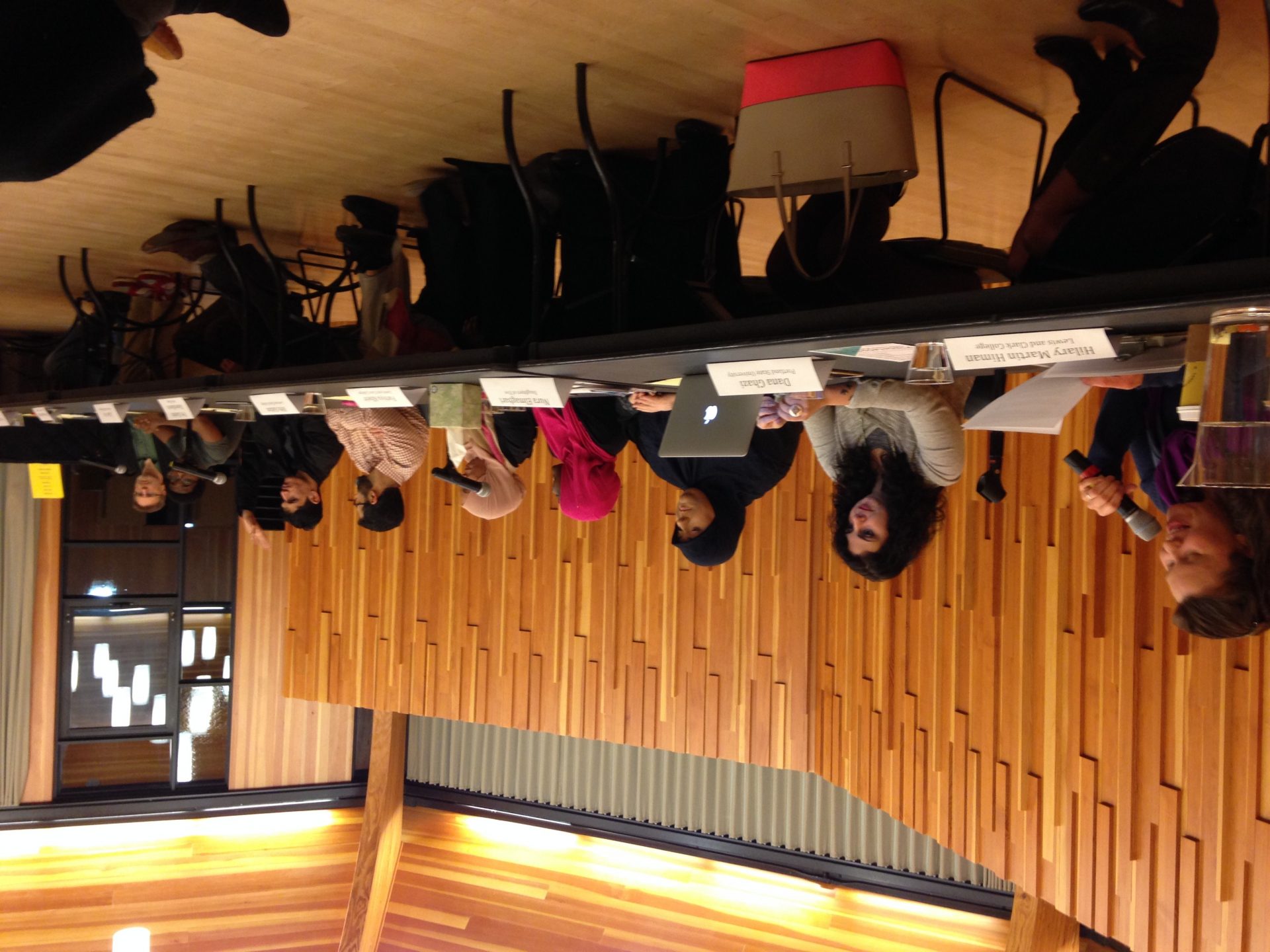
ISLAMOPHOBIA is a growing issue in America, and has been largely exacerbated by this election cycle. Both Donald Trump and Hillary Clinton have made troubling remarks about Islam, and there has been a nationwide rise in attacks and discrimination against Muslims. On Nov. 2, Lewis & Clark held a panel discussion on Islamophobia, titled “Confronting Islamophobia: examining the past, acknowledging the present, transforming the future.” Members of the Portland Islamic community, LC students and professors from Reed and LC paneled the discussion. It was sponsored by the Office of Religious and Spiritual Life, and moderated by Hilary Martin Himan, Chamberlin Social Justice and Faith in Action Coordinator. She opened the discussion with a moment of silence for Hussain Saeed Alnahdi, a Saudi Muslim who attended the University of Wisconsin-Stout who was beaten to death on Oct. 30 in Menomonie, Wisconsin. The panel then started by attempting to define the term Islamophobia and discuss if it is the proper word to describe the phenomenon seen in the US right now.
“Islamophobia is very difficult to define. I think phobia as you’re afraid of spiders, you don’t want to be around them,” Reed Associate Professor of Religion and Humanities Kambiz GhaneaBassiri said. “But with Islam, people can’t get enough of Islam, so it’s not a phobia or the fear or ‘founded fear’ of Islam. In my writings I often don’t use the word Islamophobia, I talk about it in terms of anti-Muslim sentiment, that seems to be more accurate. Mainly because the notion of phobia hasn’t captured attitudes that people have towards Muslims, but it’s a term [which] suffices for the public discourses that we need to have today.”
LC Department Chair and Associate Professor of Religious Studies Paul Powers added to GhaneaBassiri’s remarks.
“What I might stress about this category of Islamophobia is to think about it as the function it serves for the people who embrace it, as an element of identity formation through othering parts of the world or people seen as different, establishing those boundaries to establish a sense of self,” Powers said.
Mahmoud Ahmed ’19 added that Islamophobia is usually used in reference to Arab Muslims, so the anti-Muslim dynamic is as much racial as it is religious.
The topic then shifted to incidences of Islamophobia that the speakers had personally experienced.
Dana Ghazi, former Portland State University (PSU) student body president, spoke to her experience in student government. After the series of racially biased incidents at LC last fall and the Paris bombings, Muslim students, and Muslim women especially, were harassed at PSU. Ghazi sent an email discussing these incidents and was faced with hostility and suspicion, and even referred to by some fellow students as a jihadist with a hidden Muslim agenda.
Nura Elmagbari, a member of Daughters of Eve, a local nonprofit that works to empower Muslim women in their communities, and local middle school teacher, talked about the institutionalized discrimination she faces as a teacher and a conservative Muslim.
“Most of the time people fear what they don’t know,” Elmagbari said. “They only know what they see in the media. I practice more conservatively than other Muslims I know, so I stand out. But I’m also almost six feet tall, so people usually don’t bug me. At the end of the day, [discrimination is] going to happen, and I hope it’s just words. I carry mace now, and a stun gun… For the first time in my life, I look over my shoulder. And I’ve never done that before. Not even after 9/11.”
Farhiya Kheir ’18 and Biftu Sultan ’20, who both wear hijabs, talked about how that makes them easy targets for verbal attacks at any time. Zafar Ali ’20 and Ahmed spoke about airport discrimination in particular. They had both been questioned or randomly searched on multiple occasions.
The group then moved on to discussing the notion of the Muslim as a foreign enemy, particularly in America’s political rhetoric.
“[It stems from] the last two years, the unbelievably high number of attacks,” Elmagbari said. “That’s the fear that creeps in, because I am so visibly Muslim. I grew up in this country, I was taught to be a proud American who fought for her rights because I have freedom of speech. [But] if I speak out against the wars in the Middle East, then I’m branded a terrorist sympathizer. If I speak out in terms of support for my people in the US, I’m an infidel. So where am I supposed to be?”
Ghazi spoke to the political reasons behind creating the “Muslim enemy” stereotype.
“I think this idea of the creation of Muslims as a foreign enemy has served certain agendas for a long time,” Ghazi said. “The war in the Middle East, was being sold as [being about] ideological differences. So there’s the creation of the Muslim ‘villain brown man’ who is oppressive and the image of the oppressed woman. We’re using this narrative of human rights and advancing feminism and democracy while it was wars that hurt specifically women’s activist groups. The number one victims of ISIS are Muslims themselves.”
The final panel question asked the speakers about their strategies for combating Islamophobia. Most of the panelists agreed that the more people understand and have contact with Muslims lessen anti-Muslim sentiment and Islamophobia. Ali said that there needs to be a consideration of culture as being different than religion: two groups that share a religion may not identically interpret them in a modern social and political context .
“Visit a mosque,” Kheir suggested. “It’s the most peaceful place.”
Subscribe to the Mossy Log Newsletter
Stay up to date with the goings-on at Lewis & Clark! Get the top stories or your favorite section delivered to your inbox whenever we release a new issue.

Leave a Reply